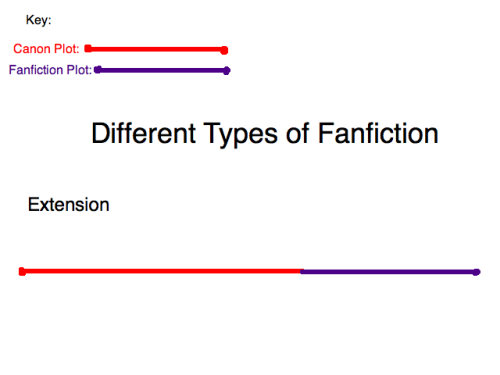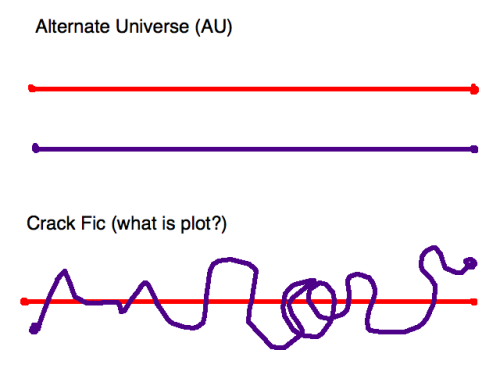Being Disabled Will Really Have You Thinking/saying Things Like “yeah I’m Not Really THAT Disabled.
being disabled will really have you thinking/saying things like “yeah i’m not really THAT disabled. as long as i take my meds twice a day (and as needed), eat and drink exactly the right things, keep the perfect balance of being active and resting, the weather is stable, and nothing unexpected happens AT ALL… i’m totally FINE! i probably should not even call myself disabled at this point because i’m doing so well!”
if you don’t want to call yourself disabled, that’s fine and it is your choice! but if you’re only “fine” or “doing really well” when a bunch of different variables are all lined up perfectly, then maybe you are not fine actually. just a thought!
More Posts from Allegedlyiwrite and Others
a writing competition i was going to participate in again this year has announced that they now allow AI generated content to be submitted
their reasoning being that "we couldn't ban it even if we wanted to, every writer already uses it anyway"
"Every writer"?
come on
Writing is like a hard video game level
You’re bitching and screaming at the screen as you try and fail to make progress
But when someone concernedly suggests you take a break?
“Oh no, it’s fun and relaxing!”
Tips for writing flawed but lovable characters.
Flawed characters are the ones we root for, cry over, and remember long after the story ends. But creating a character who’s both imperfect and likable can feel like a tightrope walk.
1. Flaws That Stem From Their Strengths
When a character’s greatest strength is also their Achilles' heel, it creates depth.
Strength: Fiercely loyal.
Flaw: Blind to betrayal or willing to go to dangerous extremes for loved ones.
“She’d burn the whole world down to save her sister—even if it killed her.”
2. Let Their Flaws Cause Problems
Flaws should have consequences—messy, believable ones.
Flaw: Impatience.
Result: They rush into action, ruining carefully laid plans.
“I thought I could handle it myself,” he muttered, staring at the smoking wreckage. “Guess not.”
3. Show Self-Awareness—or Lack Thereof
Characters who know they’re flawed (but struggle to change) are relatable. Characters who don’t realize their flaws can create dramatic tension.
A self-aware flaw: “I know I talk too much. It’s just… silence makes me feel like I’m disappearing.” A blind spot: “What do you mean I always have to be right? I’m just better at solving problems than most people!”
4. Give Them Redeeming Traits
A mix of good and bad keeps characters balanced.
Flaw: They’re manipulative.
Redeeming Trait: They use it to protect vulnerable people.
“Yes, I lied to get him to trust me. But he would’ve died otherwise.”
Readers are more forgiving of flaws when they see the bigger picture.
5. Let Them Grow—But Slowly
Instant redemption feels cheap. Characters should stumble, fail, and backslide before they change.
Early in the story: “I don’t need anyone. I’ve got this.”
Midpoint: “Okay, fine. Maybe I could use some help. But don’t get used to it.”
End: “Thank you. For everything.”
The gradual arc makes their growth feel earned.
6. Make Them Relatable, Not Perfect
Readers connect with characters who feel human—messy emotions, bad decisions, and all.
A bad decision: Skipping their best friend’s wedding because they’re jealous of their happiness.
A messy emotion: Feeling guilty afterward but doubling down to justify their actions.
A vulnerable moment: Finally apologizing, unsure if they’ll be forgiven.
7. Use Humor as a Balancing Act
Humor softens even the most prickly characters.
Flaw: Cynicism.
Humorous side: Making snarky, self-deprecating remarks that reveal their softer side.
“Love? No thanks. I’m allergic to heartbreak—and flowers.”
8. Avoid Overdoing the Flaws
Too many flaws can make a character feel unlikable or overburdened.
Instead of: A character who’s selfish, cruel, cowardly, and rude.
Try: A character who’s selfish but occasionally shows surprising generosity.
“Don’t tell anyone I helped you. I have a reputation to maintain.”
9. Let Them Be Vulnerable
Vulnerability adds layers and makes flaws understandable.
Flaw: They’re cold and distant.
Vulnerability: They’ve been hurt before and are terrified of getting close to anyone again.
“It’s easier this way. If I don’t care about you, then you can’t leave me.”
10. Make Their Flaws Integral to the Plot
When flaws directly impact the story, they feel purposeful rather than tacked on.
Flaw: Their arrogance alienates the people they need.
Plot Impact: When their plan fails, they’re left scrambling because no one will help them.
Flawed but lovable characters are the backbone of compelling stories. They remind us that imperfection is human—and that growth is possible.
The barista in chapter three? She has a life outside of giving your protagonist coffee. The villain’s henchman? Maybe he’s just trying to pay off his dad’s medical bills. Every character has their own story, their own motivations. The world doesn’t revolve around your protagonist, don’t write like it does.
So my health, both mentally and physically, is a hot mess. But at least I’ve been writing
Being a writer is sitting by yourself reading your dialogue out loud and either thinking “oh yeah, this is literary genius” or “have I ever actually been in a conversation before?”
Or I let my anxiety think, “what’s the worse that could happen?”
“how do you come up with your plots?” i let my intrusive thoughts win.
Writing Tips: Character Interactions (First)
Not all characters are going to get along and some are going to get along really well. What’s important is working out their interactions.
Things to think about
1. Where do they first initially meet?
Depending on how they meet it can really alter the characters perception of the other. Between a bar, school, workplace, battlefield, or traveling someplace together. It will impact how they interact. If it’s a casual party then there is a more friendly vibe. If it’s a battlefield, friendliness isn’t exactly the thing to think about.
2. What do the characters first notice about another person?
Do they look at clothes first? Hair? Eyes? And do they acknowledge what they like or dislike in there head? Do they compliment the person on what they find attractive or unique?
3. How do they perceive the other person initially?
Depending on how they interact it can lead someone to have a bad impression or good impression. This is where it can be fun. If character A is pretending to be amiable and kind, does character B fall for it or are they able to see through it. Further more, if character a says something off putting does character b think they’re weird or just awkward.
4. Use internal thoughts or description to show the perceptions they have
Use the description or thoughts to make the first interaction more memorable. If character a is more of a scrutinizing or judgmental type then have them often being far too harsh or vivid in how they describe someone. Juxtapose that different description types too. Imagine if character b then describes the same person in much kinder light. It creates an array of perceptions about a singular person.
5. Attraction
Think about how your character acts when they are attracted to another person. Are they very upfront and honest? Flirtatious? Or are they shy and freeze up when in the face of someone their attracted to? Do they pick on them?
6. What have they heard about the other character before they interact?
Think about what have they heard about them before. If character a is known to be a chauvinist and character b meets them how would that skew their interactions. Would they be more on guard with them or more annoyed with them when they possibly solidify the rumors. Or if character a goes against that thought would character b feel guilty for thinking of them that way.
7. Biases
Everyone has biases whether we want to admit it or not and your characters should have biases as well. This can push your characters to deepen their relationships and also have them grow as characters as well.
8. Have they met prior?
If they’ve met prior how did that go. What all history do they share. This is more for the first on screen interaction. If they are meeting again has the other person changed? Personality wise and physically wise. What was their relationship like before this meeting. If so try to show the distance in time and then trying to re familiarize themselves with each other.
9. What is the purpose of their meeting?
Are they being introduced through a mutual friend or is this a fight? Are they in a bar and they just were dancing with each other. Whatever the context is let that shape how the characters act with each other. The environment and purpose of the meeting is going to greatly alter how they act.
10. Have fun
Just have fun with it. The characters should be written in how they would interact with the person. I’m how they would present themselves and in how they would go about it. They should do it uniquely to. Have their nervous ticks shown.
There are plenty more tips to give but these are things I think about when writing first meetings in stories.




I don’t know if anyone has ever done this before but, here ya go… The Different Types of Fanfiction!
I probably left a few out, but these are the most common, compared to their base fiction’s canon plot. Enjoy! XD
my coffee is good today, i'm rereading my old wip, and listening to the old playlist that drove that whole project to the finish line.
remembering why i started, i once thought, would have to come in a pivotal moment of my career: bagging an accomplishment, receiving critical acclaim, or making a name for myself.
who would've thought that it comes to me in a simple, cloudy Saturday, with feelings in my chest that says: i made you write before, darling. i'll make you write about me again.
-
 talysalankil reblogged this · 1 week ago
talysalankil reblogged this · 1 week ago -
 liviascorners liked this · 1 week ago
liviascorners liked this · 1 week ago -
 trail-mx reblogged this · 1 week ago
trail-mx reblogged this · 1 week ago -
 icastmagicmissile29 liked this · 1 week ago
icastmagicmissile29 liked this · 1 week ago -
 art-is-art-ist-art liked this · 1 week ago
art-is-art-ist-art liked this · 1 week ago -
 hilariously-tragic liked this · 1 week ago
hilariously-tragic liked this · 1 week ago -
 panpipes reblogged this · 1 week ago
panpipes reblogged this · 1 week ago -
 redmoonclouds liked this · 1 week ago
redmoonclouds liked this · 1 week ago -
 chaosoftheseas liked this · 1 week ago
chaosoftheseas liked this · 1 week ago -
 herbaliciousss reblogged this · 1 week ago
herbaliciousss reblogged this · 1 week ago -
 herbaliciousss reblogged this · 1 week ago
herbaliciousss reblogged this · 1 week ago -
 herbaliciousss liked this · 1 week ago
herbaliciousss liked this · 1 week ago -
 simonfairchildirl liked this · 1 week ago
simonfairchildirl liked this · 1 week ago -
 c0n3-h03 liked this · 1 week ago
c0n3-h03 liked this · 1 week ago -
 wherefore-whinnies liked this · 1 week ago
wherefore-whinnies liked this · 1 week ago -
 pancake-clouds reblogged this · 1 week ago
pancake-clouds reblogged this · 1 week ago -
 much-ado-about-whumping liked this · 1 week ago
much-ado-about-whumping liked this · 1 week ago -
 transratsactivist reblogged this · 1 week ago
transratsactivist reblogged this · 1 week ago -
 transratsactivist liked this · 1 week ago
transratsactivist liked this · 1 week ago -
 mortispater liked this · 1 week ago
mortispater liked this · 1 week ago -
 lesbianswarm liked this · 1 week ago
lesbianswarm liked this · 1 week ago -
 i-looktothe-stars reblogged this · 1 week ago
i-looktothe-stars reblogged this · 1 week ago -
 i-looktothe-stars liked this · 1 week ago
i-looktothe-stars liked this · 1 week ago -
 heteroeroticsubtext liked this · 1 week ago
heteroeroticsubtext liked this · 1 week ago -
 ueko liked this · 1 week ago
ueko liked this · 1 week ago -
 arsonadvocate liked this · 1 week ago
arsonadvocate liked this · 1 week ago -
 blueberrygirlfriend liked this · 1 week ago
blueberrygirlfriend liked this · 1 week ago -
 y0mega99 reblogged this · 1 week ago
y0mega99 reblogged this · 1 week ago -
 y0mega99 liked this · 1 week ago
y0mega99 liked this · 1 week ago -
 oceanlaceagate reblogged this · 1 week ago
oceanlaceagate reblogged this · 1 week ago -
 oceanlaceagate liked this · 1 week ago
oceanlaceagate liked this · 1 week ago -
 patroclusbro reblogged this · 1 week ago
patroclusbro reblogged this · 1 week ago -
 sarpedon reblogged this · 1 week ago
sarpedon reblogged this · 1 week ago -
 ohhmichelettoohh reblogged this · 1 week ago
ohhmichelettoohh reblogged this · 1 week ago -
 ohhmichelettoohh liked this · 1 week ago
ohhmichelettoohh liked this · 1 week ago -
 living-in-my-fairytales liked this · 1 week ago
living-in-my-fairytales liked this · 1 week ago -
 queer-chnospinci reblogged this · 1 week ago
queer-chnospinci reblogged this · 1 week ago -
 wormpit liked this · 1 week ago
wormpit liked this · 1 week ago -
 drfagpire reblogged this · 1 week ago
drfagpire reblogged this · 1 week ago -
 crowtidestrider liked this · 2 weeks ago
crowtidestrider liked this · 2 weeks ago -
 xxpunkbovidxx liked this · 2 weeks ago
xxpunkbovidxx liked this · 2 weeks ago -
 oomderoom liked this · 2 weeks ago
oomderoom liked this · 2 weeks ago -
 otakusotakuseverywhere liked this · 2 weeks ago
otakusotakuseverywhere liked this · 2 weeks ago -
 fandom-fan-22 liked this · 2 weeks ago
fandom-fan-22 liked this · 2 weeks ago -
 idiottimetraveler liked this · 2 weeks ago
idiottimetraveler liked this · 2 weeks ago -
 talysalankil liked this · 2 weeks ago
talysalankil liked this · 2 weeks ago -
 savetheenbees liked this · 2 weeks ago
savetheenbees liked this · 2 weeks ago -
 nutella-icecream reblogged this · 2 weeks ago
nutella-icecream reblogged this · 2 weeks ago

21 he/they black audhdWriting advice and random thoughts I guess
232 posts